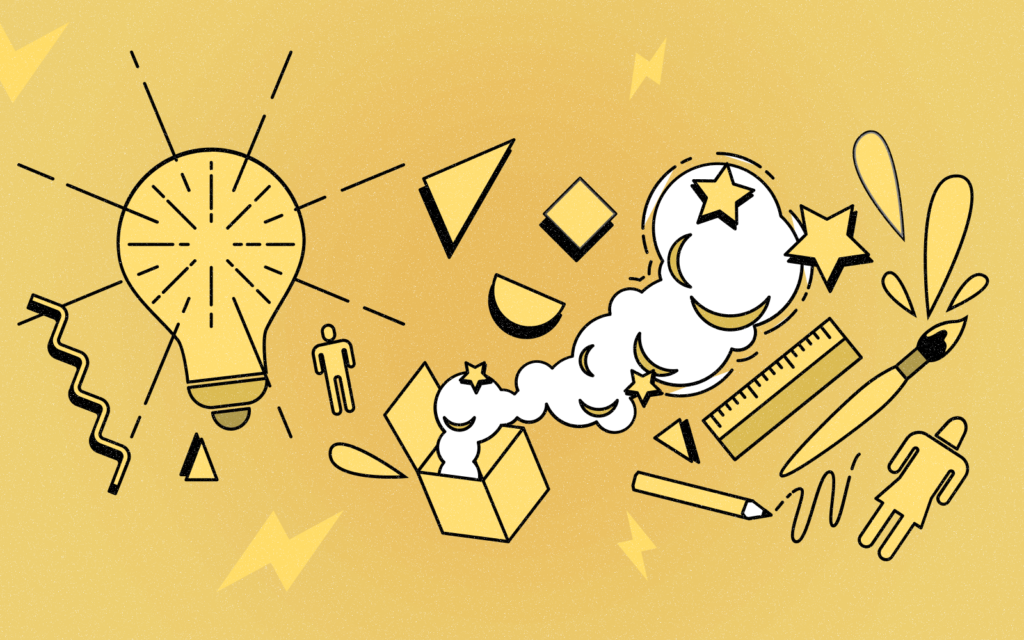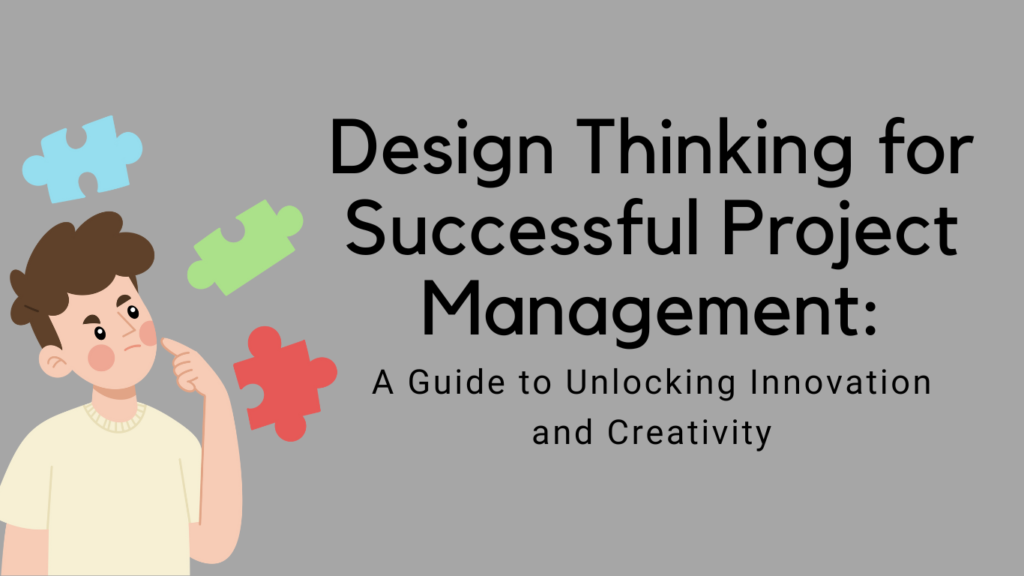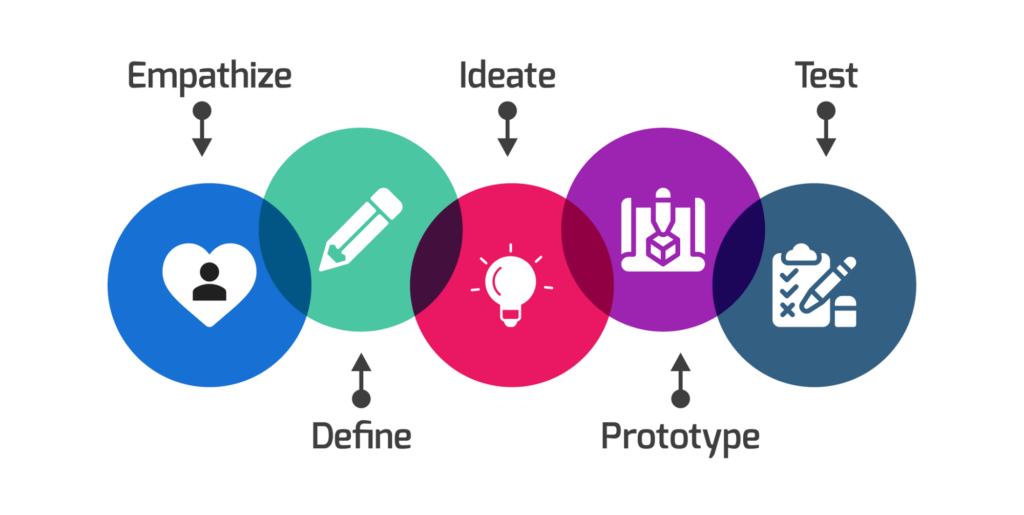Design Thinking for Effective Project Management

Design thinking is a powerful approach to problem-solving that has gained popularity in recent years. It is a human-centered methodology that focuses on understanding the needs and wants of end-users and using that information to create innovative solutions. While traditionally associated with product design, design thinking can also be applied to project management.
In this blog post, we will explore the benefits of using design thinking in project management and provide practical tips for incorporating this approach into your project planning process. Whether you are a seasoned project manager or just starting out, this post will provide valuable insights into how design thinking can help you achieve project success. So, let’s dive in and discover the power of design thinking in project management!

Design thinking is a problem-solving approach that puts the user at the center of the process. It was developed by Stanford University professor Tim Brown and IDEO’s CEO, an innovation agency. The purpose of design thinking is to create innovative solutions that meet the needs of the user in a way that is both practical and aesthetically pleasing.
Design thinking involves understanding the user’s needs and goals, generating ideas, prototyping and testing, and iterating until a solution is found that meets all the criteria
Design thinking has become an essential tool in project management, as it helps teams to find creative solutions to complex problems. By involving the user in the process, design thinking helps to ensure that the end product is something that meets their needs, leading to greater satisfaction and success.

Additionally, the iterative nature of design thinking means that teams can quickly test and refine their ideas, reducing the risk of costly mistakes later on. Overall, design thinking has revolutionized the way that teams approach problem-solving, making it more user-centric, creative, and effective!
Benefits of Design Thinking in Project Management
As design thinking is a human-centered approach that puts the user’s needs at the heart of the process you can In project management, design thinking can help teams to deliver better outcomes, drive innovation, and improve the quality of their work.
Let’s review some other benefits:
- User-Centered Approach: Design thinking allows project managers to take a user-centered approach to their work. By understanding the needs and desires of the end-user, project teams can create products and services that meet their needs and exceed their expectations.
- Improved Collaboration: Design thinking encourages collaboration and co-creation within project teams. It allows team members to work together to develop solutions that address complex problems and challenges.
- Enhanced Creativity: This framework is a creative process that encourages teams to think outside the box and come up with innovative solutions. By using a design thinking approach, project teams can generate new ideas and concepts that may have been overlooked in a traditional project management approach.
- Iterative Development: Design thinking is an iterative process that involves testing and refining ideas over time. This approach allows project teams to make improvements and adjustments to their work based on user feedback and data.
- Increased Flexibility: This is a flexible approach that can be adapted to different projects and situations. It allows project teams to be agile and responsive, making changes as needed to ensure they are delivering the best possible outcomes.

The 5 Steps of Design Thinking
The design thinking process is a problem-solving approach that involves empathizing with users, defining the problem, ideating solutions, prototyping, and testing. Here are the detailed explanations of each step:
- Empathize: In this step, you put yourself in the user’s shoes to understand their needs, experiences, and pain points. You can conduct interviews, surveys, or observations to gain insights into their behaviors and motivations.
- Define: Once you have gathered insights, you define the problem you want to solve. You should frame the problem in a way that is specific, actionable, and focused on the user’s needs.
- Ideate: In this step, you generate as many ideas as possible to solve the problem. You can use brainstorming techniques, such as mind mapping or SCAMPER, to come up with creative solutions.
- Prototype: After you have selected the best ideas, you create prototypes to test them. Prototypes can range from sketches or mockups to fully functional models. The goal is to get feedback from users and refine the solutions.
- Test: In the final step, you test the prototypes with users and gather feedback. This feedback will help you refine the solutions and ensure that they meet the user’s needs. You may need to iterate through the ideation, prototyping, and testing steps multiple times until you have a solution that works.

Design Thinking for Successful Project Management: A Guide to Unlocking Innovation and Creativity
Project management involves identifying project requirements, creating a project plan, and coordinating resources to ensure that the project is completed on time, within budget, and to the satisfaction of stakeholders. But, most importantly, effective project management also involves problem-solving, decision-making, and risk management.
And, what’s the best way to fulfill those objectives? By designing your thought flow…
The relationship between design thinking and project management is complementary. Project management provides the structure and framework for managing resources and achieving goals, while design thinking provides a methodology for creating innovative solutions that meet the needs of users.
Yet, how do you successfully implement design thinking in project management? Let’s teach you!

Below, you have a great model on how to implement design thinking in project management. Find the extended model here by Project Management.
The workflow of the project at hand under the light of design thinking should start with empathizing.
Empathize
First, you need to understand the people involved in your project. This includes your clients and your project team. Empathizing means understanding their needs, wants, and pain points. You need to dive deep into their world to truly understand them, and this ranges from their environment, such as their organizational culture and processes, to the influencing factors shaping your project teams, such as cultural diversity, project context, work ethics, and more.
When trying to understand the project ask these questions:
- What is the project about?
- What moves it?
- What are the core values?
- What is the final goal?
Understanding the core values of the project and the company can help you align the project goals and ensure that the final goals are meeting everyone’s needs. Additionally, when understanding your project team, you need to ask questions such as:
- What are their backgrounds?
- What are their strengths and weaknesses?
- What motivates them?
By understanding your project team, you can cater to their needs and ensure that they are productive and motivated throughout the project. Overall, empathizing with your clients, company, and project team is crucial to the success of your project.
Define
After empathizing with the company or team behind the project, the next step is to define the challenge by answering the following questions:
- What is the problem or opportunity you’re trying to address?
- What is the origin of the challenge?
- Who is behind the challenge?
To clearly articulate the challenge and set a clear vision, you can use tools such as problem statements, personas, and value propositions. It’s important to conduct thorough research to gather relevant information and insights.
Here are some tips to keep in mind:
- Approach the challenge with an open mind and a willingness to learn.
- Talk to stakeholders and users to gather diverse perspectives.
- Use data and analytics to support your findings.
- Clearly articulate the challenge in a way that everyone involved can understand.
Ideate
Ideation is the process of generating and exploring new ideas and potential solutions to a problem. It’s an essential step in the design thinking process, and it requires collaboration and creativity to come up with innovative solutions. Here are some key points to consider when ideating:
- Brainstorming: Start by gathering a diverse group of people, including stakeholders and team members, to generate ideas. Use techniques like mind mapping, sketching, and rapid prototyping to explore different possibilities.
- Prioritize: Once you have a list of potential solutions, prioritize them based on their feasibility, impact, and alignment with your goals. Consider the resources and time needed to implement each solution and choose the most promising ones.
- Test and Iterate: Test your ideas by creating prototypes and getting feedback from users. Use this feedback to refine and improve your solutions, and iterate until you have a workable solution.
Remember that ideation is an iterative process, and it’s essential to remain open-minded and flexible. Encourage everyone to share their ideas and be willing to pivot if necessary. By using a collaborative and creative approach, you can generate innovative solutions that meet your needs and exceed your expectations.
Prototype
Prototyping is a critical stage in the design thinking process because it allows you to test and refine your ideas before committing to a final solution. By creating low-fidelity versions of your potential solutions, you can quickly iterate and make improvements based on feedback from users and stakeholders.
There are a variety of tools you can use to create prototypes such as:
- Wireframes: These are simple, black-and-white sketches of your solution that focus on layout and functionality.
- Storyboards: Storyboards are visual narratives that illustrate how your solution will be used in real-world scenarios.
- Mockups: These are more detailed representations of your solution that show how it will look and function.
When creating prototypes, it’s important to keep in mind that they don’t have to be perfect. The goal is to create something that will allow you to test your ideas and get feedback from others. It’s better to create multiple prototypes and test them early and often, rather than spending too much time on a single prototype that may not be effective.
Prototyping is also an opportunity to collaborate with others and get their input on your ideas. It’s important to approach prototyping with an open mind and a willingness to make changes. Not every prototype will work, and that’s okay. The goal is to learn from each iteration and use that feedback to create a better solution!
Test
Testing is a crucial step in the design thinking process as it enables project managers to validate their ideas and ensure that they meet the needs of their target audience. By testing prototypes with real users, project managers can gather valuable feedback that can help them refine their solutions and make them more effective.
One of the ways to test involves:
- Usability testing is one of the most common tools used to evaluate prototypes. It involves observing users as they interact with the prototype and recording any issues they encounter.
- A/B testing involves comparing two versions of a prototype to determine which one is more effective.
- Surveys can also be used to gather feedback from a larger audience and provide valuable insights into user preferences and needs.
By utilizing these testing tools, project managers can ensure that their solutions are user-centered and meet the needs of their target audience. In addition to these testing tools, project managers need to be open to feedback and willing to iterate their solutions as needed.
This means taking the time to analyze the feedback gathered during testing and making changes to the prototype based on that feedback. By continuing to iterate and refine their solutions, project managers can ensure that they are delivering the best possible product to their users.
Takeaway
The success of design thinking in project management relies on a willingness to embrace ambiguity and the willingness to iterate. Project managers must be prepared to pivot as they learn more about their users and the problem they are trying to solve. By adopting a design thinking mindset, project managers can create products that are truly innovative and impactful.
If you’re looking to integrate design thinking into your project management approach, start by focusing on empathy and experimentation. Take the time to truly understand your users and their needs, and don’t be afraid to try new approaches. With the right mindset and approach, design thinking can help you create truly transformative products!
-The Monitask Team


